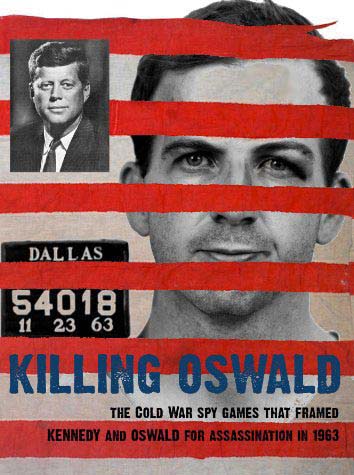Scene 2 (4:30-10:30): Carl Hanratty, the F.B.I. Agent That Nabbed Abagnale
Looking for Sean O’Riley
But who’s the cat in this
“cat and mouse”
game? Let’s see how
Abagnale’s criminal career
ended!
“[...]
in Washington,
D.C.,
F.B.I.
Inspector
Sean O’Riley was ordered to drop
all his other cases and concentrate
solely on nabbing me.”
(book
“Catch Me If You Can”,
page 77)
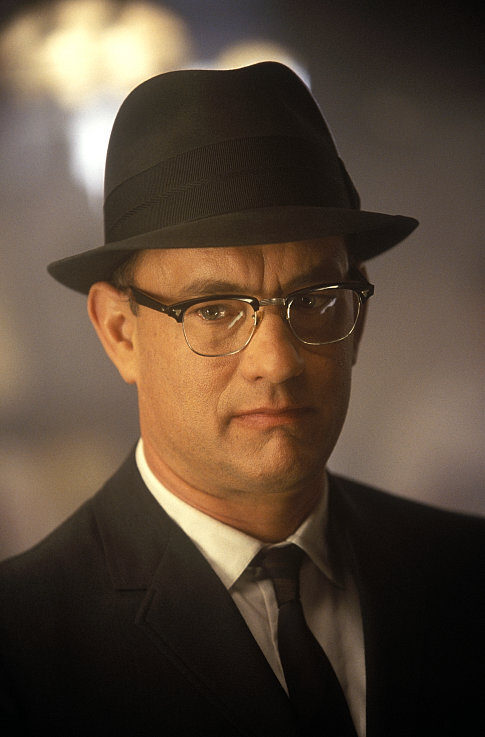
So, it’s Carl Hanratty
(introduced in scene 2 and played by
Tom Hanks)
in the movie, and
Sean O’Riley in the book.
(The kid who gets paid to impersonate Abagnale
as a diversion at the Miami Airport in
scene 17
(1:39:16-1:45:17) misunderstands his name to be
Handratty — another humiliation for the
F.B.I.
agent!)
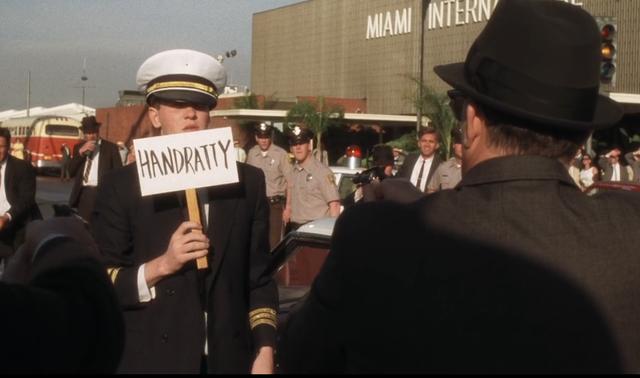
As I indicated in the
intro,
one of the major
objectives
of this web site is to document my search
for the real Hanratty-O’Riley. And,
yes, I will reveal the true
identity of the
F.B.I.
agent that caught Frank Abagnale…
Just hang in there!
The
dress code
of the
F.B.I.
agents in the movie — black
suits, white shirts, black tie —
is spot on. “Dark suits,
white shirts, dark ties, and haircuts
that harkened back to the 1850s were
the order of the day, every day.
[...] In short, any hint
of personal flair was not permitted. I
found that out early on, when I got
tired of wearing a white shirt and
decided to wear a pin-striped shirt to
class instead. I thought I looked
pretty sharp, but the training
supervisor [at the
F.B.I.
Academy in Quantico,
VA]
disagreed. He yanked me out of
class, demanded to know if I was having
some kind of ‘laundry
problem’, and strongly suggested
that I either get with the white-shirt
program or get the hell
out.” (William Rehder,
“Where the Money Is”,
page 22)
(Actually, the hats were typical for
G-men
too during the
Edgar Hoover
days!)
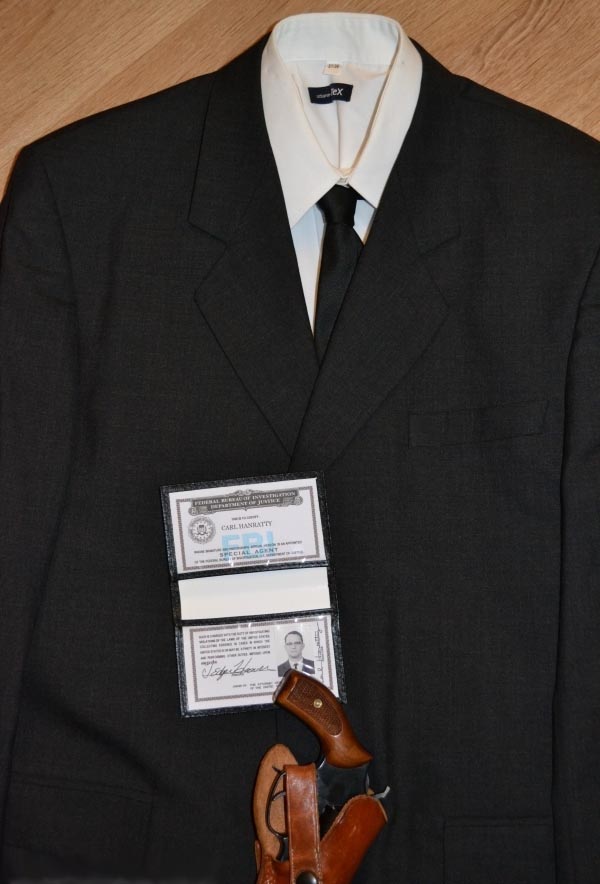
There’s for instance
scene 17
(1:39:16-1:45:17) at the Miami Airport
where Abagnale discovers the place is
crawling with undercover
F.B.I.
agents just by studying the clothes…
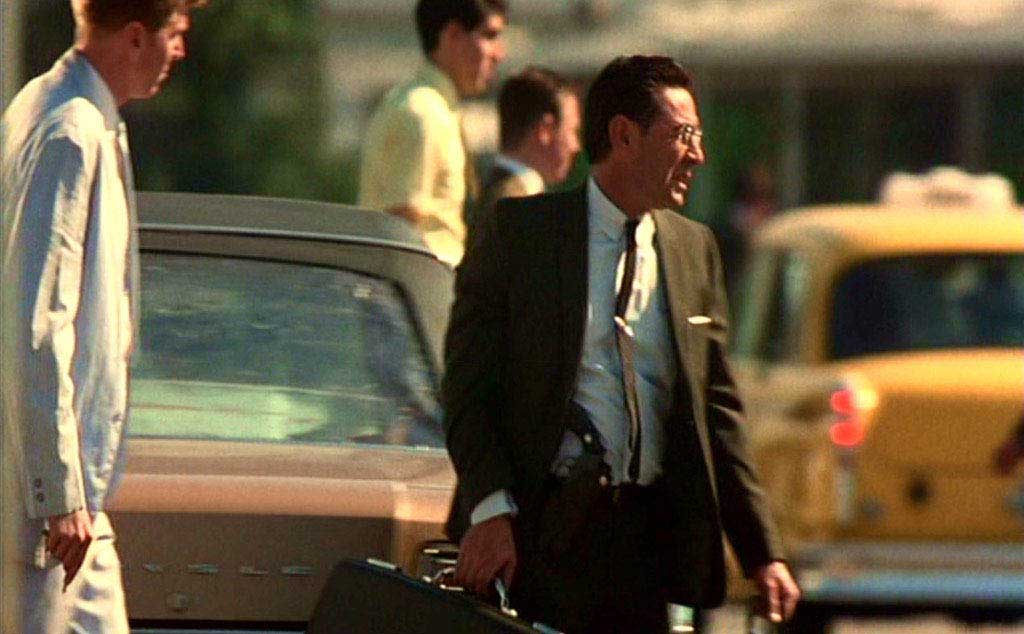
Scene 17 — 1:40:13
Fine, but we need to hit the pause button
here. Who is William Rehder and why am I
quoting him? Is he the real Hanratty
perhaps?
Fast rewind
Looking for William Rehder
Let’s start by saying that the
real Hanratty was not a man
called
Sean O’Riley,
the name used in the book “Catch
Me If You Can”. The careful
reader will find this warning in the
book’s legend:
“[...]
all of the characters and some of
the events have been altered, and all
names, dates and places have been
changed.” Duly noted!
Or read the interview with Abagnale
added to the 2003 edition of the book:
“‘O’Reilly’
is still alive and, I’m pleased
to say, doing well. I have been on the
telephone. He has watched my children
grow up.” (page 214) Note
that the interview speaks of
“O’Reilly” between
quotes, indicating that this is not his
real name!
On page 202 of the book, prison
Lieutenant Combs calls O’Riley
the ultimate bank robbery specialist:
“I’ve read about
this guy O’Riley,
[...] he’s
supposed to be hell on wheels for
nabbing bank robbers.”
And so I started searching for the
bank robbery specialist(s)
of the
F.B.I.
Admittedly, that took a while —
I didn’t get anywhere with the
search engines. I got a break when I
studied the movie’s
end credits
closely. William J. Rehder is listed
as “Technical Advisor” for
the
F.B.I.
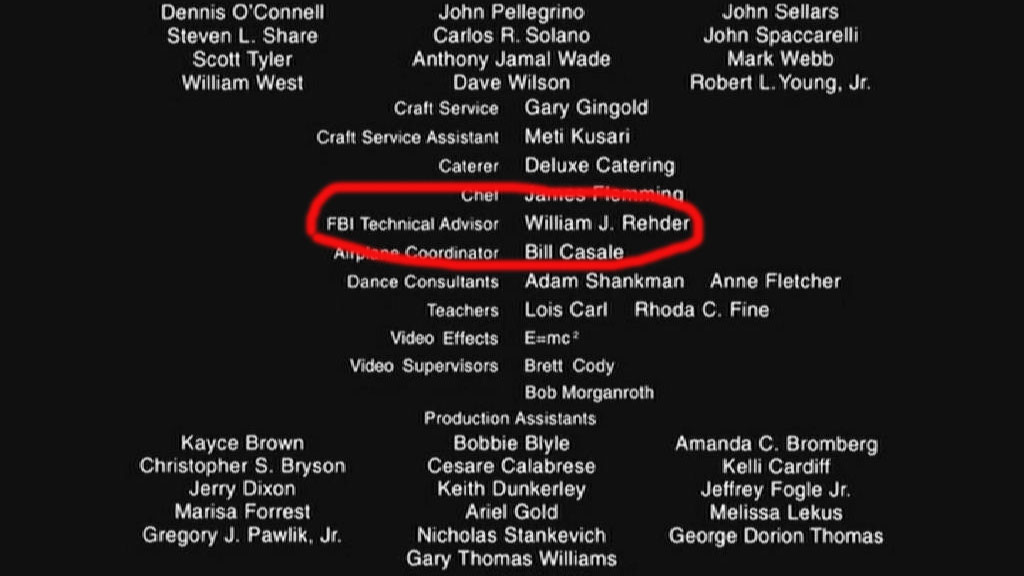
Scene 22 (end titles) — 2:12:29
(Consulting on the movie set of
“Catch Me If You Can” was
not a first for Rehder! He collaborated
on
Kathryn Bigelow’s
movie “Point Break” (1991).
“Before
‘Point Break’
was filmed, I was told by the Special
Agent in Charge
[“SACs”
are in charge of an
F.B.I.
field office] to take Keanu
Reeves, a pleasant but somewhat spacey
young man, under my wing and give him
some pointers on how to portray an
F.B.I.
agent chasing bank robbers.
Unfortunately, none of those pointers
came within a million miles of the
finished film.” (book
“Where the Money Is”,
page 262))
IMDB page on Point Break
—
Wikipedia page on Point Break
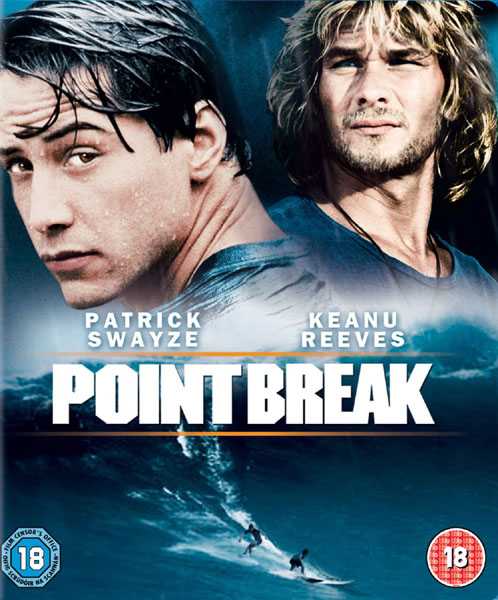
More importantly, in July 2003, the
retired
F.B.I.
agent William J. Rehder
published a book on bank robbers in
2003: “Where the Money Is”,
with the help of ghost writer Gordon
Dillow.
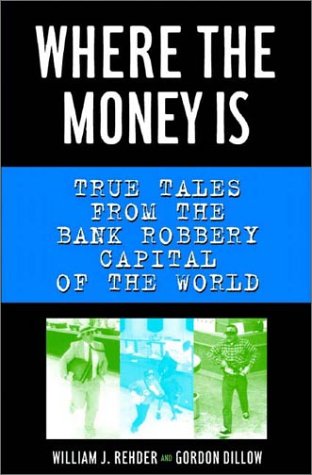
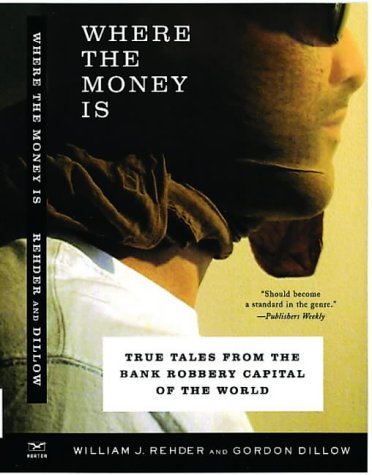
William Rehder (with Gordon Dillow)
“Where the Money Is”
True Tales from the Bank Robbery Capital of the World
W. W. Norton, 2003
ISBN 393051560
The title may require
a bit of explanation for many readers.
It’s of course a reference to a
bank robber’s famous one-liner.
Question: “Why do you rob
banks?”
Willie
Sutton:
“Because that’s where the
money is!” Sutton always denied
ever having said that, but he did
author a book about his extensive
criminal career called “Where
the Money Was”. The process of
considering the obvious first is now
commonly called
“Sutton’s law”,
it’s mainly taught to medical
students as a means to an efficient
diagnosis.
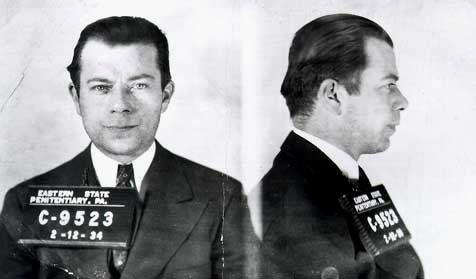
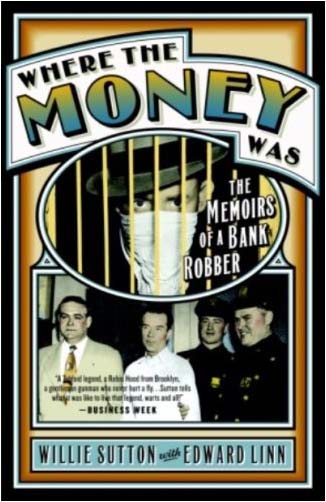
Sutton got on the
F.B.I.’s
most wanted list.
Abagnale,
who never used violence during his scams,
did not. Still, the movie contains a hint
that he did: when he joins the
F.B.I.
to serve the remainder of his sentence
as a goverment employee, the “wall
of infamy” in the lobby lists the
Bureau’s most wanted fugitives.
You’re of course invited to
think: say, wasn’t Abagnale on
that wall himself only a few years
ago? This image drives home the idea
“poacher turns gamekeeper”
like nothing else!
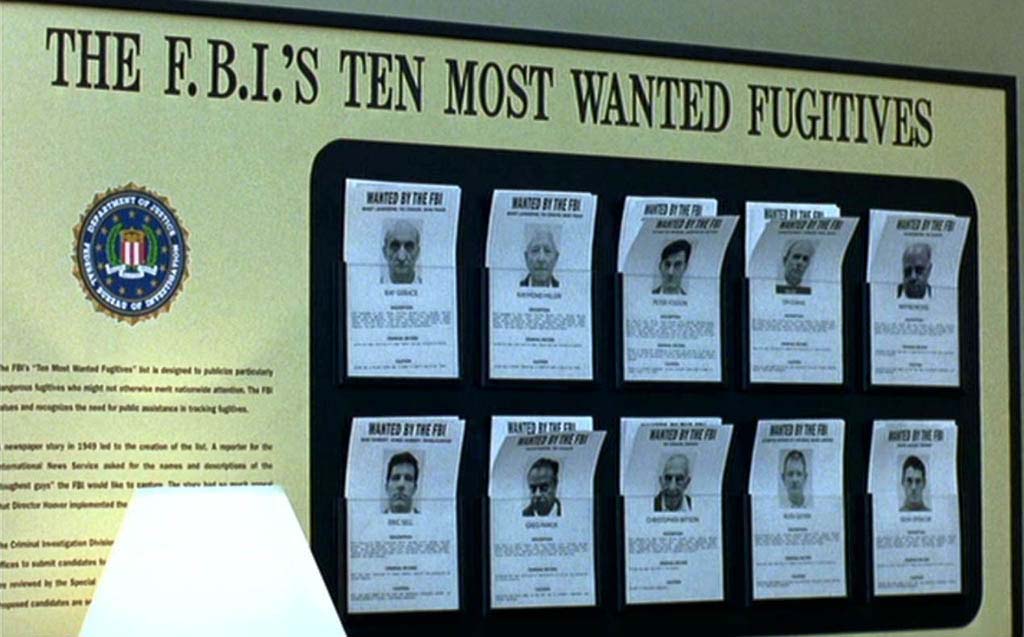
Scene 20 — 2:01:53
A second later, Abagnale steps into
the frame to report for work on his
first day and the
focus
of the
camera lens
shifts from the wall (in the
background) to
Leonardo DiCaprio
(in the foreground). Which allows me
to explain
racking focus,
a film technique
that Spielberg uses consistently
throughout the film — much more
so than in his other movies! Amongst
others, he uses it in scene 8
(39:01-39:04) when Abagnale seduces
the stewardess Marci on the airplane
by flashing a necklace
“that must have slipped
right off [her]
neck” in front of
her. (Other example: Hanratty in front
of the fake
doctor’s diploma
on the wall in scene 13
(1:18:58-1:19:01).)
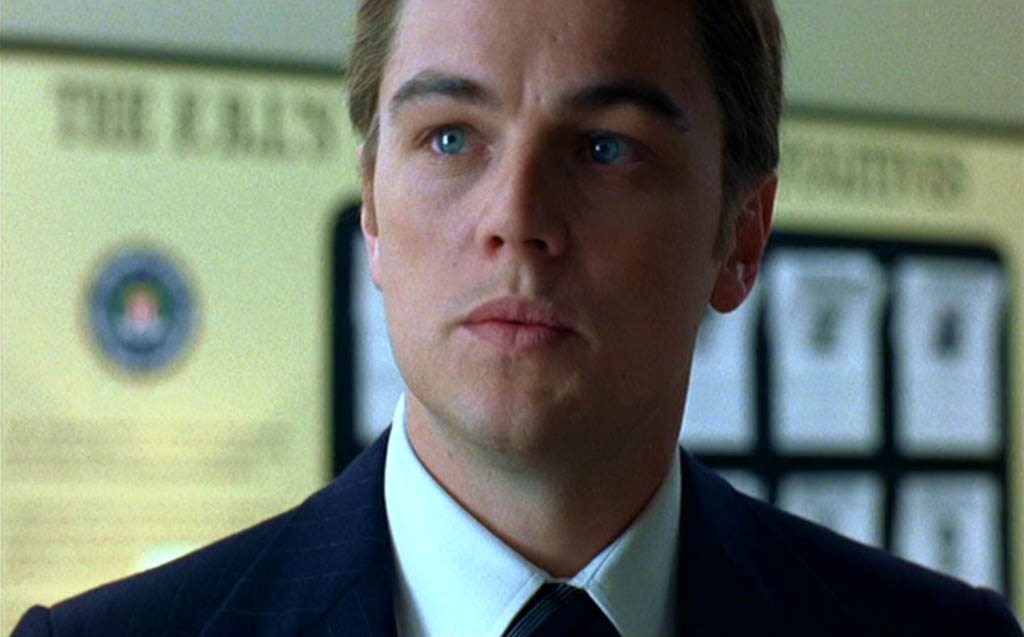
Scene 20 — 2:01:59
The camera assistant called
focus puller
is responsible for
“racking” or
“pulling” focus from one
subject to another within the frame.
Does this seem “over the
top” to you? After all, the photo
camera you bought for under $100
already has an
autofocus lens,
right? It isn’t. Professional
filmmaking requires manually
operated lenses!
Autofocus systems use infrared beams
or ultrasonic sound to gauge the
distance between the lens and the
subject and only “see”
things in the center of the frame.
These techniques do not anticipate
an actor stepping into the foreground
of the frame, for instance, exactly
the situation we have here! And
passive autofocus systems —
they don’t direct any energy
toward the subject — rely on
the analysis of the image that
enters the optical system and
can’t adjust well to sudden
changes.
Hence, a focus puller is present on
the set to adjust the focus onto
different subjects. And above all,
(s)he will
“follow” focus
when the camera moves in on or away
from a subject or vice versa. This
too is beautifully illustrated in
that short exchange with
Marci
(scene 8, 38:43-39:14), as it should
be with characters moving around in
the narrow space of an aircraft
fuselage…
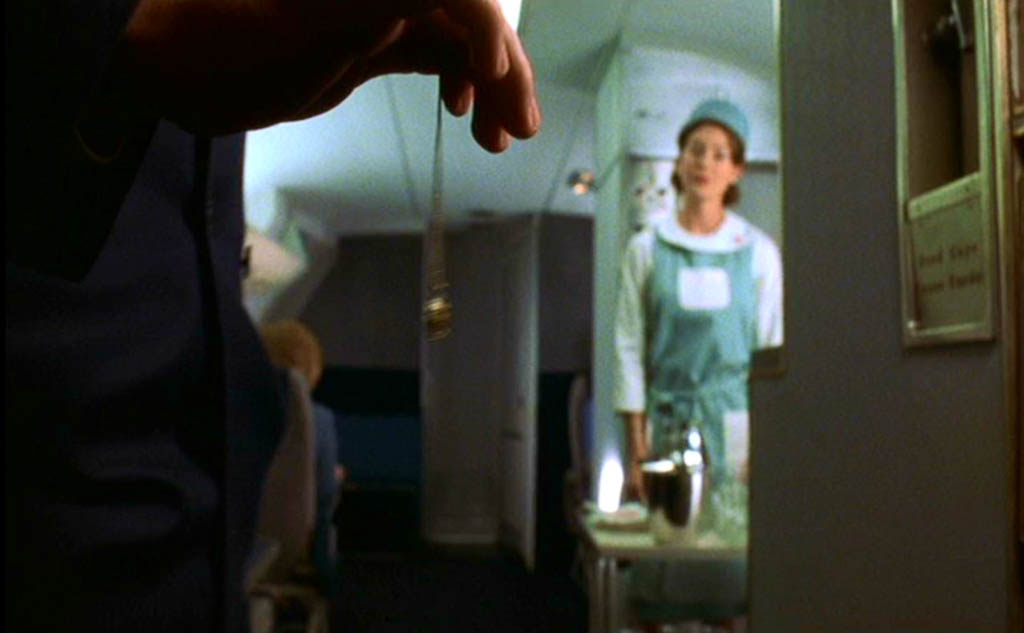
Scene 8 — 39:03
Could Rehder be the real
Hanratty-O’Riley with his name
cleverly hidden in the end titles as
“technical advisor”?
Let’s make the case for
William J. Rehder
then…
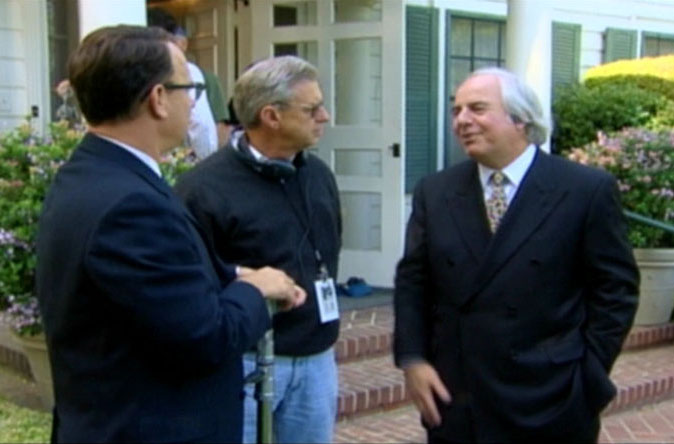
Tom Hanks, William Rehder and Frank Abagnale on the movie set
William Rehder was indeed the
F.B.I.’s
number one man when it came to bank
robberies.
I spent the next three decades
chasing bank robbers for the
F.B.I.,
almost all of it in Los Angeles, my
first and last field office assignment
after a year in Cleveland. In fact, as
far as I can determine, I spent more
years chasing bank robbers, and was
involved in more bank robbery cases,
than any other agent in Bureau history.
In time I became known, if you’ll
pardon the professional immodesty, as
America’s foremost authority on
the bank robbery genre.
[...] I developed the
position of
bank robbery coordinator,
a kind of profiling job that required
me to track serial bank bandits, to
study their methods and habits, and
try to predict when and where they
would hit next. If you robbed a bank
in Los Angeles, or almost anywhere
else in America, my job was to get
inside your head, to figure out what
your story was. Although most of them
never realized it, thousands of bank
bandits had me looking over their
shoulders. (book “Where
the Money Is”,
page 46)
Years later,
CBS’s
“48 Hours”
TV news
magazine would describe me as “the
F.B.I.’s
secret weapon in the war against bank
robbers”. (book “Where
the Money Is”, page 69)
Since my retirement I’ve
often been asked to talk about bank
robberies to various groups of bankers,
security officials, and law enforcement
officers. They bill me, flatteringly,
as “America’s foremost
authority on bank
robberies”. (book
“Where the Money Is”, page
98)
The psychological profile fits:
F.B.I.
agent or not, Rehder is a
humane, mild-mannered
person — as is
Hanratty in the movie.
We’ve already quoted the ultimate
proof for this, actually:
“‘O’Reilly’
is still alive and, I’m pleased
to say, doing well. I have been on the
telephone. He has watched my children
grow up.” (book “Catch
Me If You Can”, page 214) (Rehder
lives in Los Angeles; Abagnale lived in
Tulsa, Oklahoma for many years and moved
to Charleston,
South Carolina in 2009, even if he has an
office on Pennsylvania Avenue, Washington,
D.C.)
Unless you know many policemen that
fraternize with the criminals they put
behind bars…
In the book “Where the Money
Is”, on page 97-98, Rehder
discusses Eddie Dodson [not his real
name!] who committed a record number
of small-time bank robberies in Los
Angeles and was sentenced to long prison
terms twice: “And he and I
have become — well, friends.
[...] We’ve exchanged
letters, and spent hours on the phone
together — two retirees talking
about old times. [...]
We’ve even talked about going
on the road together after he gets
out.” (Eddie Dodson was
armed, Abagnale never carried a weapon or
committed violence.) Same argument: how
many policemen are willing to
etc.?
It all looks good so far, doesn’t
it? But two things bothered me greatly:
for one, Rehder does not mention
Abagnale anywhere. How could he
not discuss this spectacular case
— one he worked full-time at some
point, direct orders from the top
— in his book? And he certainly
didn’t have to protect
Abagnale’s identity:
Abagnale’s book
was first published in 1980, 23 years
before Rehder’s book. Talk about
a cat out of the bag!
Rehder’s age
turned out to be another problem: he
joined the
F.B.I.
in 1966 and started work on
bank robberies in 1967 in Los Angeles
where he spent his entire career after
a 1-year stint in Cleveland as an
F.B.I.
“rookie”. If indeed he went
after Abagnale, it must have been at
the very start of his career, not later
on when many years of experience had
made him the Bureau’s “top
dog” to solve bank jobs.
(What do we really know about
Hanratty’s age? Nothing! The
published screenplay
contains a single clue (on page 154).
It has the movie end with the following
title card: “Special agent
Carl Hanratty retired in 1986
[...]”. (That’s
specific information because
F.B.I.
agents retire at the age of 57.) Only,
this bit was dropped from the movie
and a date is quickly changed to
protect somebody’s identity...)
And so my search for the real Hanratty
ended in frustration: my candidate was
a perfect fit, but the timeline
didn’t make any sense! I became
convinced that not William Rehder but
his predecessor was
Carl Hanratty.
(One more thing: you can now get to know
William Rehder a bit better by watching
the bonus material “The
F.B.I.
Perspective”. It takes the recent
release of “Catch Me If You
Can” on
Blu-ray
to get your hands on it, though! None of
the previouses releases I’m aware
of include this section — as much
as it would have helped me in my search
for the real Carl Hanratty...)
Fast rewind
Looking for Carl Schlatter
Following that new hypothesis, I knew
that William Rehder must have known
the real Hanratty well, must have
trained under him
etc. Any
hints as to who this other
G-man
might have been? On page 9 in the
acknowledgements, Rehder’s book
thanks Carl Schlatter, “my
mentor and West Coast father figure
when I was a young agent”.
Was he Carl Hanratty? That would mean
the first name was real but the last
name was changed to Hanratty for the
movie to protect the man’s
identity. Entirely possible, of
course…
But my search for Carl Schlatter
quickly ended in frustration. The
Internet search engines provided no
useful information whatsoever, even
if I’m happy to report that the
Swiss Professor of Medicine Carl
Schlatter was a true pioneer in
surgery in the late
19th
century.
Something else bothered me here: Rehder
calls Carl Schlatter his
“West Coast”
father figure. That didn’t work
for me: it’s hard to put in words,
but from the movie and the book —
I understand that
William Rehder
will probably take offense here —
I always saw Hanratty as an East
Coast figure. Tough, down to earth.
That dogged pursuit! A quite different
sensibility from, say, the laid-back
attitude of Los Angeles and the Bay Area.
(And on this count, I was proven right
in the end...)
The age turned out to
be wrong again: if Schlatter retired in
the late 60s
(which
F.B.I.
agents do at 57 years), he must have
been at least 90 years old by 2003. And
we know that Frank Abagnale calls
Hanratty “alive and kicking”
in his interview added to the 2003
edition of the book! And on the bonus
material (shot on the movie set in 2002),
Abagnale tells us that Hanratty is 82
years old… (bonus
DVD,
Cast Me If You Can: The Casting of the
Film — Tom Hanks as Carl Hanratty,
1:32-1:35)
Fast rewind
An Obituary for Joseph Shea
And so Carl Hanratty remained an
“unsub”
to me in the end. Twice a year, I would
hit the search engines again to see if
new data had become available. No results
for a number of years.
Nevertheless, this story has a happy
ending! After his death,
Hanratty’s identity was disclosed on
the Internet — although it’s
still virtually impossible to find much
real information on him…
The real Carl Hanratty was —
drumrolls please —
F.B.I.
agent
Joseph
(“Joe”)
Gerald
Shea, a man of Boston
Irish descent! (Is that
“East Coast”
enough for you?)
Make no mistake: that Joe Shea is
indeed Carl Hanratty is beyond doubt!
Abagnale’s book “Stealing
Your Life”, contains the following
dedication: “In memory of
Joseph G.
Shea, Special Agent, Federal Bureau of
Investigation (Carl Hanratty)”.
Well, there you have it!

Frank W. Abagnale
“Stealing Your Life”
The Ultimate Identity Theft Prevention Plan
Thorndike Press, 2007
ISBN 0786298707
One source even reports that the
character was called Joe Shea in the
shooting script,
but that the name was changed to Carl
Hanratty “for unknown
reasons”.
I think you can dismiss that
“unknown reason” out of
hand. It’s pretty obvious that
the retired agent Joseph Shea did not
seek the publicity that comes with a
Spielberg movie and wanted to protect
his privacy —
an entirely legitimate request on his
part! And then there’s the small
matter of
Bureau policy.
G-men
are civil servants that operate with
the tax payer’s dollar. In that
context, acting like a rock star is
not acceptable behavior.
(Remember for instance the
Apollo 15
astronaut
Dave Scott
who took a bribe from a German stamp
dealer to take a collection of
commemorative postal covers
to the moon and back for him.
Mr.
David Scott
became an instant
“persona non grata”
at
N.A.S.A.
for this bit of chicanery. He and his
crew members Alfred Worden and James
Irwin, who were in on the stunt,
never flew again.)

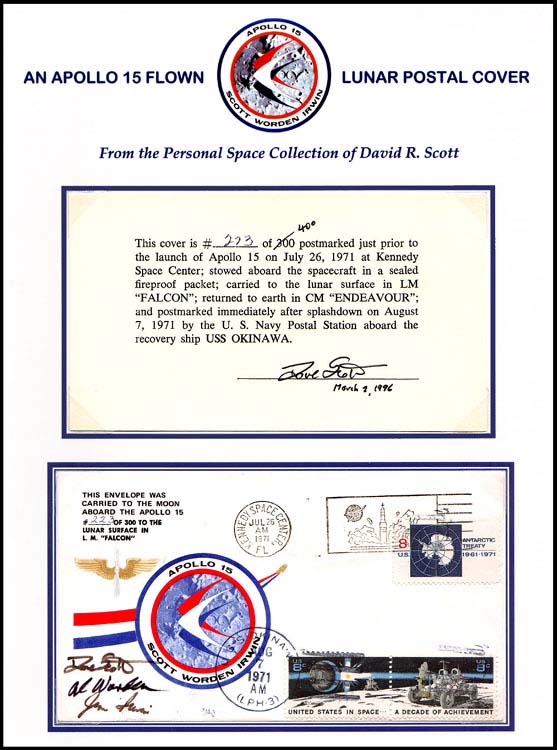
Any collaboration the
F.B.I.
gives to Hollywood is discrete and
often “uncredited” —
even after you retire. And I’m
not even mentioning the Hoover years
when the Bureau exerted the tighest
possible control on press relations,
certainly a culture that was deeply
ingrained in Joseph Shea.

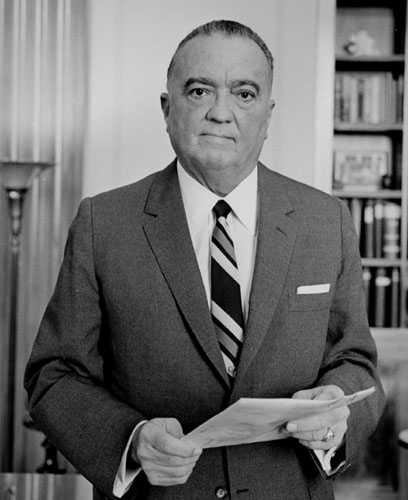
Several sources claim that Tom Hanks
himself came up with the name Carl
Hanratty, but only the actor can
confirm that. It’s supposedly
a combination of Carl Betz, a star
on the “Donna Reed Show”,
and Terry Hanratty, a former
Pittsburgh Steelers quarterback.
In the end, I never did discover
the true identity of Carl Hanratty.
As far as I can tell, his children
spilled the beans at his death, in
his obituary. Not that this bothers
me: we’re all entitled to our
privacy, and my quest was limited
to fair, legitimate means —
studying the written sources closely,
searching among the public
information available on the Internet
etc.
After all, I’m a philologist
and movie buff, not a
paparazzo
or a sleazy reporter!
Even now, there’s hardly any
information available on
Joe Shea.
In the bonus material on the two-disc
special edition of the
DVD,
Frank Abagnale tells us that the real
Hanratty is Boston Irish (bonus
DVD,
Cast Me If You Can: The Casting of the
Film — Tom Hanks as Carl Hanratty,
0:51-0:55). And in a written source,
Abagnale reports that Joe Shea died in
2005 at the age of 85. He’s buried
at Georgia Memorial Park Cemetery, Marietta.
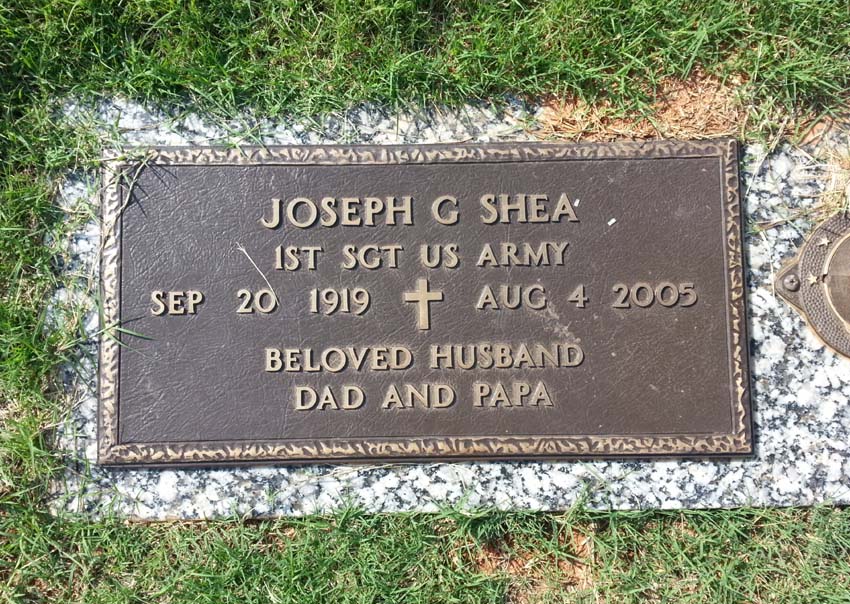
That date is indeed correct. Joe Shea was
born in Brookline, Massachussets, in 1919;
his mother was Irish born. (Told you: Boston
Irish!) He joined the Army in 1942 and spent
the war as Command Sergeant Major in the
36th Division.
Sent to the European theatre, he participated
in the crucial
Battle of Monte Cassino!
This campaign was part of the push towards
Rome; it led to 54,000 allied casualties. It
is well known in the
U.S.A.:
when Abagnale lived in Tulsa, Oklahoma, his
three sons attended
the Monte Cassino school…


After the war, Joseph studied Accounting at
the Boston College and joined the
F.B.I.
as an identification clerk to become a
Special Agent in 1951. During his career, he
worked in several regional offices, including
Louisville, Atlanta and Chicago — more
about the Windy City shortly.
Another known case he worked on is the
Barbara Mackle kidnapping
of 1968; it inspired an autobiography and two
TV movies.
(“83 Hours ’til Dawn”
(1990) is utterly unremarkable despite a
cast that includes
Paul Winfield,
Samantha Mathis
and
Lee Ermey,
the drill instructor from Stanley
Kubrick’s “Full Metal
Jacket”.) The twenty-year old student
Mackle, whose father Robert owned one of the
biggest home-building companies in America
and was a personal friend of President
Richard Nixon, survived being buried alive
in a box for more than three days.
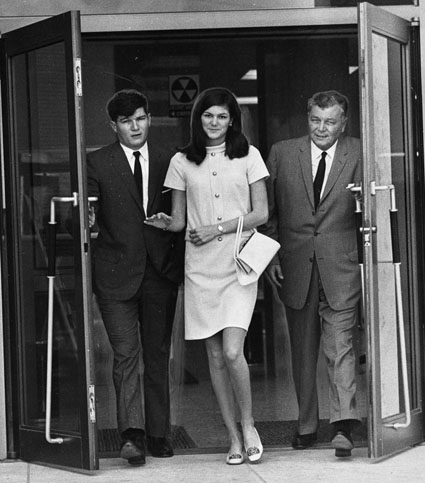
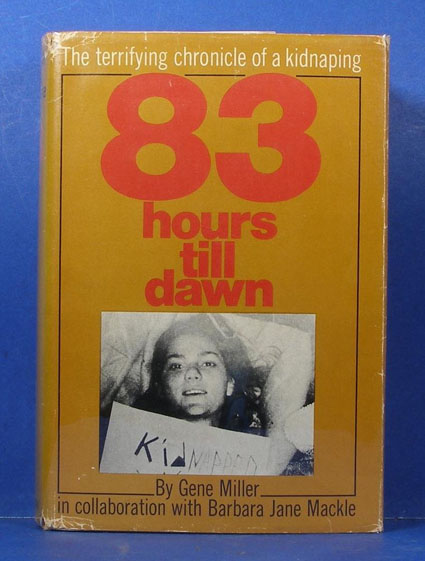
Still, his role in this case was marginal
at best. The 400-page book, which mentions
dozens and dozens of
F.B.I.
agents, doesn’t contain his name.
The book also explains why: most of the
150 agents in the Miami
F.B.I.
field office, where the Mackle family lived,
worked on the case (page 209). So did the
Atlanta field office with 100 agents (page
263). Georgia is where Barbara Jane Mackle
studied, was kidnapped and buried alive in
the woods. And we know agent Joseph Shea
worked in Atlanta and lived in Marietta,
Georgia for years.
A family member found it worthwhile to
include the Mackle kidnapping in Shea’s
obit, which is the only reason we know about
it. In reality, his involvement was
insignificant.
Shea retired in December 1977 — that
date makes perfect sense given our timeline!
—, moved to a farm in Kentucky before
he returned to Marietta in 1997,
where his two daughters Reva and Ruth then
lived.
On to Chicago and more Americana:
F.B.I.
agent Joseph Shea spent much of his career
on the “Organized Crime” task
force of the Chicago field office. And so
it happens that his name crops up in the
“Warren Commission Report”,
no less!
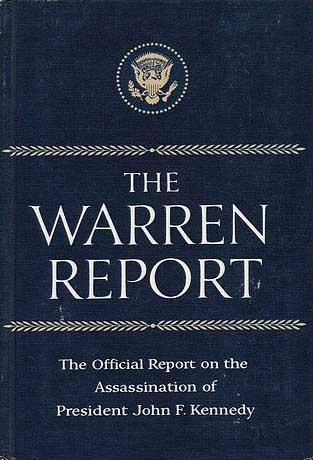
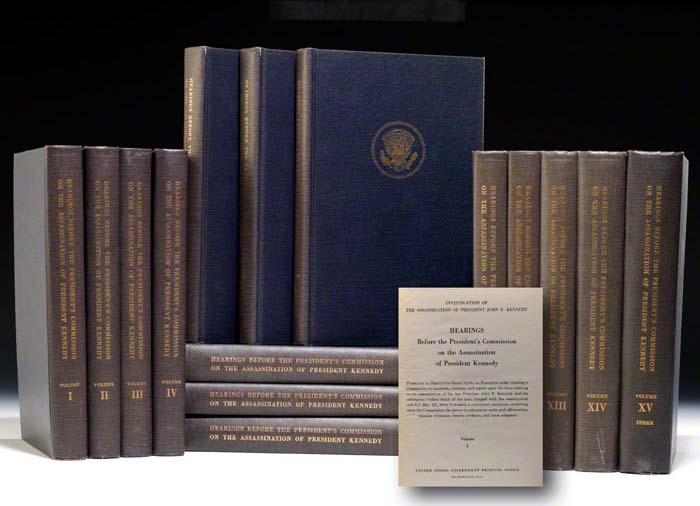
But hold your horses: whatever the Bureau
did wrong — which is one hell of a
lot, actually — Joseph Shea did not
do it. Here’s the account of his minute
and ultimately marginal contribution to the
investigation of
John Kennedy’s assassination…
The week after the president’s execution
in Dallas, he was asked to look into
Jack Ruby,
the murderer of
Lee Harvey Oswald,
for a few hours and couldn’t come up with
anything even remotely interesting. Talking to
connected nightclub owners — a long shot
to begin with — turned into a dead end
after seconds.
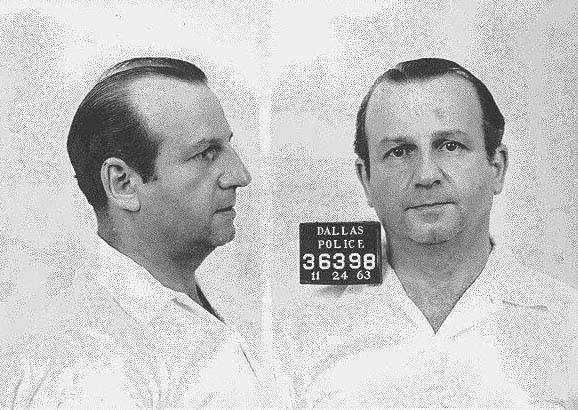
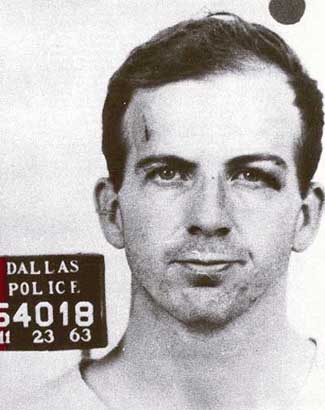
Anyway, here are the
F.B.I.
reports in full.
Commission Exhibit 1209 (interview with Tony Leonardi)
(PDF file, 57 KB)
Commission Exhibit 1211 (report on Ruby’s acquaintances in Chicago)
+
Commission Exhibit 1212 (interview with Frank Loverde)
(PDF
file, 80 KB)
I’m sure every
F.B.I.
agent on the anti-mob team, if not the entire
field office, put in his bit to investigate
Jack Ruby, né Jack Rubinstein, of
Chicago.

The fact that thousands of reports were
published at all is quite a joke, actually.
This was done at the insistence of
J.F.K.’s
successor
Lyndon Johnson.
Publishing not just the actual report but
also 26 volumes of largely irrelevant
appendices — including a study of
Lee Harvey Oswald’s pubic hair
— would prove once and for all that
the government had nothing to hide.
“The American public
don’t read!”, he added
cynically.
But has a presidential ploy ever
backfired more than that? Private
researchers were quick to detect
inconsistencies, leads that were never
followed, destroyed evidence, altered
and omitted documents and what have
you… Too bad, Lyndon, but the
American public does read!
(A recent book on the
J.F.K.
assassination, “The Lee Harvey Oswald
Files”, makes the claim that the
F.B.I.’s
Chicago Office pursued the case diligently.
Not to investigate Jack Ruby, mind you,
but three weeks earlier to investigate
the unstable Cuban Miguel Casas Saez,
another “lone nut” set up to
take a shot at Kennedy from a building
along his route. Kennedy’s trip to
Chicago on 2 November 1963 was canceled
at the very last moment. (The airplane
with the press corps had already taken
off!) Officially, this was done because
the Vietnamese president Diem had just
been murdered, but in reality the Secret
Service had learned of the assassination
plot. Not that you will find any
of this in the Warren Report. The Chicago
Office was ordered to forget the
assassination attempt and the crucial
documents are missing from the archives.
To my knowledge, this dossier is discussed
for the first time by Belgian attorney and
forensic auditor Flip de Mey.)
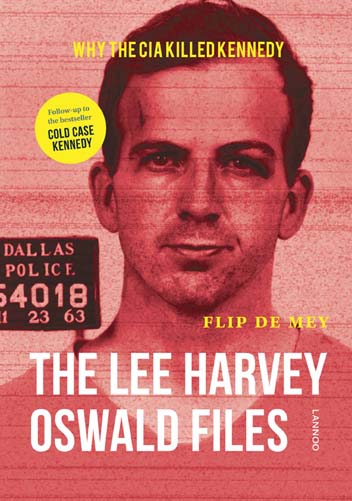
Flip de Mey
“The Lee Harvey Oswald Files”
Why the C.I.A. Killed Kennedy
Lannoo, 2016
ISBN 9401432961
In interviews, Abagnale describes
Hanks’ performance as highly
accurate — down to Shea’s
mannerisms. And he reports that Joseph
Shea visited the movie set. Furthermore,
I was told by a close friend that Joseph
Shea attended the premiere and sat next
to Tom Hanks during dinner. This
information I give you for what
it’s worth: I never found the
photographic evidence you can reasonably
expect in such cases to support the
claims…
Frank Abagnale on Joseph (“Joe”) Shea (“Carl Hanratty”)
In closing, here are two genuine if small
pictures of
Joe Shea.
In the first photo, Shea (second from
the right) poses with Abagnale (first
on the left) and some Bureau colleagues.
The blowup is meant to put a
recognizable face on the name. I know
the photos are no bigger than stamps,
but that’s all you can find on
the Internet. (At least, my stamps are
untainted by corruption.)
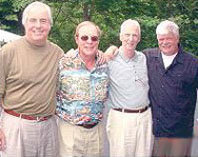
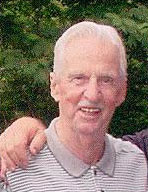
Then again, you could say that
somebody’s missing in the group
picture: Abagnale’s oldest
son
Scott has
a law degree and is now with the
F.B.I.
(He used to be in the Baltimore field
office, he now works on kidnappings.)
Fast rewind
Catch the Catchy Tunes
The musical
“Catch Me If You Can”
(that opened on Broadway in April 2011)
takes this further: in the non-singing
part of track 17, “Stuck Together
(Strange but True)”, Hanratty is
said to have become the godfather of
Abagnale’s children!
(They’re called Scott, Chris and
Sean.) As I found no confirmation of
this fact anywhere — Abagnale
hasn’t mentioned it once when
discussing his friendship with Joe
Shea —, we can assume this is
poetic liberty.
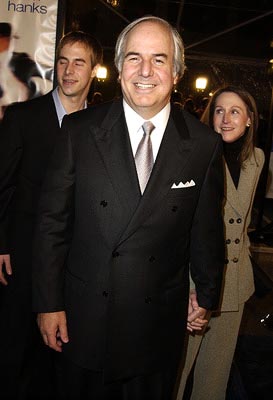
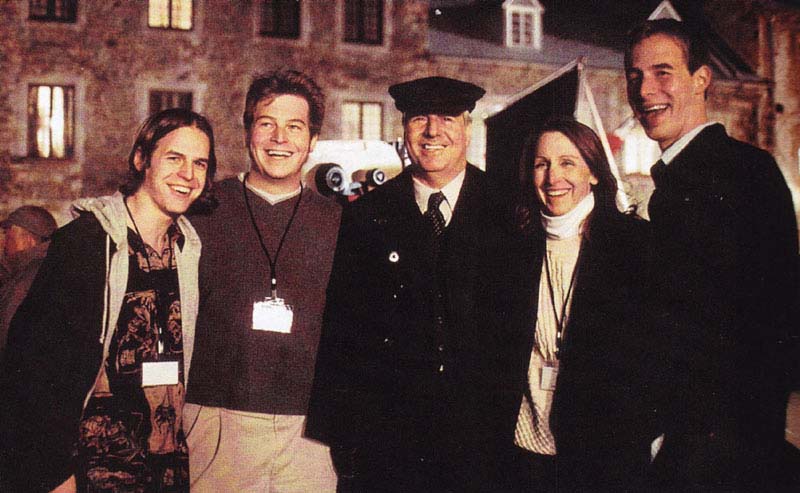
His wife Kelly Welbes and middle son
Chris own a fashion boutique in the
historic downtown of Charleston. His
youngest son creates computer games for
Glu Mobile
in China.
In track 11, “Little Boy, Be a
Man”, the lyrics describe Hanratty
as having no kids. In the movie,
he’s presented as a
divorcé… with a (grown-up)
daughter. In reality, Joseph Shea has
two daughters, but frankly, it
doesn’t matter. It has no impact
on the rest of the story, which makes it
a purely private affair…
Besides, it’s a classic
screenwriter’s
trick to portray Hanratty as a single
man. It places him opposite slick,
suave Abagnale who picks up girls the
way other people pick up their mail
in the morning. In
scene 11,
you see Abagnale seducing a model in a
posh hotel while Hanratty is washing,
no, ruining his own shirts at
the laundrette. And why would he
volunteer to spend Christmas Eve at the
office in scene 12 (1:01:04-1:03:37)
when the other
F.B.I.
agents are at home with their family?
Hell, that government job is all
he’s got left, right?
Other than that, it’s just another
musical. It contains hardly any factual
data about Abagnale, just simple not to
say bland lyrics and — luckily!
— catchy, upbeat tunes. No different
from any other show on Broadway. Mind you,
film composer
Marc Shaiman
has created brilliant work alright but I
have a hard time seeing this
musical as distinguished work.
Here are the opening lines:
“Live in living color / Let
me take you for a ride / Yes, I’m
live in living color / So sit back and
let me be your
T.V.
guide.” Impressed? I’m
not. And to make matters worse, the
booklet of the accompanying
CD
prints the lyrics… ALL IN UPERCASES.
JESUS, WHO CAME UP WITH THAT ONE?
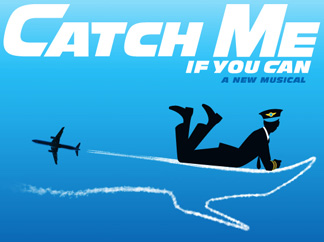
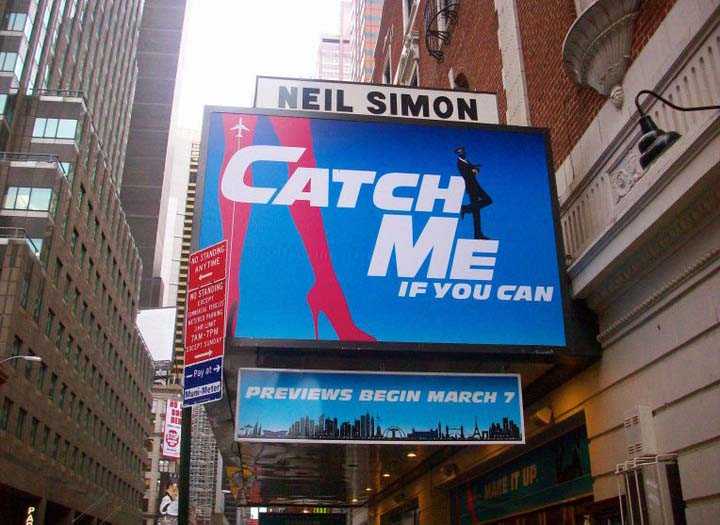
But maybe you find my criticism unfair
with the “high-flying” music
missing… Be my guest and like the
show if you saw it. After all, people
also like “Cats”,
“Hairspray” (another musical
by Shaiman and Whittman) or the
“The Book Of Mormon”. Or buy
the CD
recorded with the original cast now that
the show has closed.
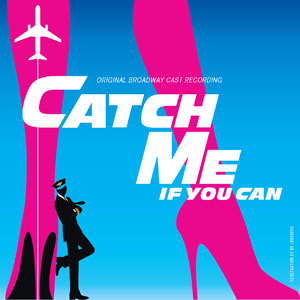
Marc Shaiman – Scott Wittman
“Catch Me If You Can”
Ghostlight Records, 2011
ISAN B0050546MS
(A German version of the musical
premièred in
Dresden
in 2015; a
2-CD album,
surprisingly more complete than the English
CD, is
available with the translated lyrics sung
by the original German cast. That’s
what “Erstaufführung” means.
Did the musical tour the country afterwards,
possibly with another cast? I couldn’t
tell you…)
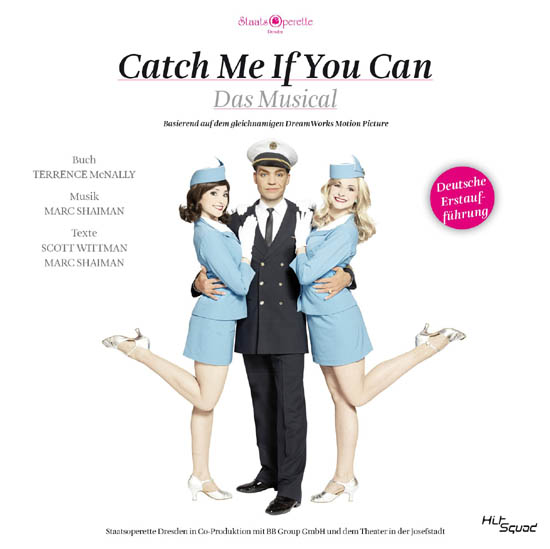
Marc Shaiman – Scott Wittman
“Catch Me If You Can — Das Musical”
Hitsquad Records, 2015
ISAN B0147US8B6
Fast rewind
Submit feedback






























